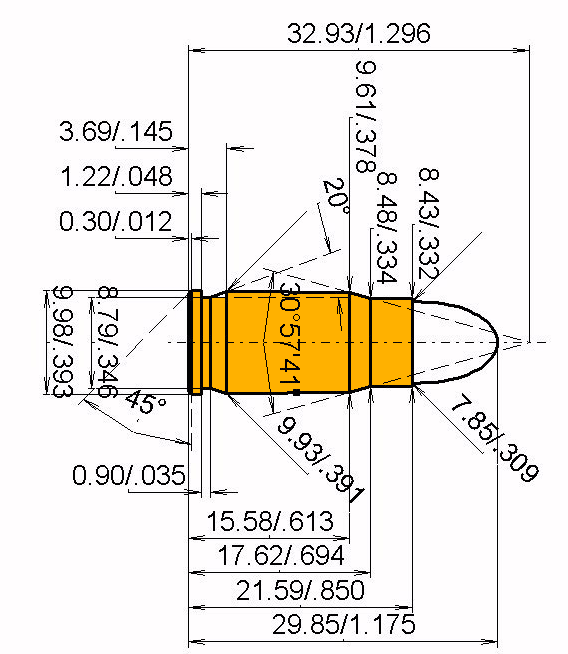Load data for caliber "7.65 Para (.30 Luger)"
The 7.65 Para (.30 Luger) is a type of medium-sized pistol cartridge developed in Germany during World War I, and is still widely used today.The 7.65 Para (.30 Luger) utilizes an 89 grain full metal jacketed bullet that produces velocities over 1,000 feet per second at the muzzle with an energy level of 481 ft/lbs
| Caliber: | 7.65 Para (.30 Luger) |
|---|---|
| Cartridge Type: | Pistol/Revolver |
| Bullet Diameter: | 0.308 '' | 7.82 mm |
| Primer Size: | Small Pistol (SP) |
| Max. Case Length (l3): | 0.84'' | 21.41 mm |
| Max .Cartridge Length / OAL: | 1.18'' | 29.84 mm |
| Maximum Standardized Pressure: | 34084.4 psi | 2350 bar |

C.I.P.
The Commission internationale permanente pour l'épreuve des armes à feu portatives ("Permanent International Commission for the Proof of Small Arms" – commonly abbreviated as C.I.P.) is an international organisation which sets standards for safety testing of firearms. (The word portatives ("portable") in the name refers to the fact the C.I.P. tests small arms almost exclusively; it is ordinarily omitted from the English translation of the name.) As of 2015, its members are the national governments of 14 countries, of which 11 are European Union member states. The C.I.P. safeguards that all firearms and ammunition sold to civilian purchasers in member states are safe for the users.
To achieve this, all such firearms are first proof tested at C.I.P. accredited Proof Houses. The same applies for cartridges; at regular intervals, cartridges are tested against the C.I.P. pressure specifications at the ammunition manufacturing plants and at C.I.P. accredited Proof Houses.

